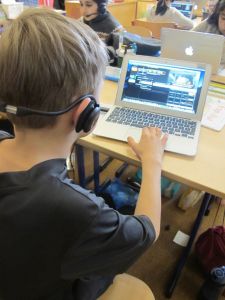 In todays international learning landscape the role of e-Learning -On-line learning is providing more and more opportunities for International Schools to leverage a greater capacity to provide a differentiated venue for learning to support their respective learning communities.
In todays international learning landscape the role of e-Learning -On-line learning is providing more and more opportunities for International Schools to leverage a greater capacity to provide a differentiated venue for learning to support their respective learning communities.
The growth of this learning medium in education and industry is significant, the number reflect this “ 5.6 million students took at least one on-line course in the Fall. of 2010 based on research by the Sloan Consortium” and according to US News Online Education report “65.5 percent of all chief academic officers reporting that on-line education is critical to the long-term strategy of an institution in 2011.”
Many international schools have embraced blended learning in an effort to provide resources, information, lessons, assignments and discussions outside of the traditional classroom, to enhance and support the opportunities for students to interact with the curriculum. This blended approach often facilitated through Moodle, Blackboard, Haiku and other Learning Management Systems.
In certain areas of the world these Learning Management Systems have played a critical role in supporting International Schools to deliver their curriculum and classes when the school has had to close due to environmental issues and political instability in the host country. There are many cases of this happening over the years, and this has provided essential continuity of learning, communication and support to their respective learning communities. These experiences by different international schools have given these venues greater importance and air time by schools. There is the World Virtual School Project consortium, of the 8 International School regions that over the years has been a key player in building capacity of collaboration and implementation of Learning Management Systems to support international schools around these 8 regions. There is also the Virtual High School and http://www.k12.com/ two of the many growing offerings available to schools to supplement and tap into this growing area. The IB has http://www.pamojaeducation.com/ a full IB authorized on-line learning platform which many schools are adopting to supplement their own face to face course offerings and giving smaller schools the flexibility to offer a wider scope of topics to their communities.
Today it is almost an non negotiable for International Schools not to have some presence and resource to support on-line or blended learning. The flexibility, and opportunities to extend the learning experience outside of the school walls, and ability to support students that are sick, absent, or out for personal reasons, allows learning to continue beyond the school walls has become a key ingredient to a school’s culture.
On-line learning is here to stay, and in its various forms blended learning or fully On-line learning comes in two flavours: Synchronous is live, the learner and course facilitator (teacher) interact live in real time, in a virtual classroom setting, in many ways a simulation of a real classroom live on-line, through a video feed, or a video conferencing environment such as Adobe Connect. Asynchronous is not live, but allows the learner to work at their own pace within a time-line and not at the same time as other participants or the course facilitator (teacher) often with little live interaction.
Many Universities adopting on-line learning called MOOCs (Massive open on-line course) have been getting a lot of attention in the media. Today more and more universities are adopted these eleanring platforms to deliver a variety of courses (Massive open on-line course MOOC) options some of these are free and others are fee paying. The MOOC model is set up to facilitate learning at a big scale in an open access format. This is a growing area in higher education, and something which long term will also impact International Schools. This model is already being used with a variety high schools ( an example: http://ohs.stanford.edu/) which are now offering an on-line high school in different venues and is becoming a rapidly growing market.
In industry On-line Learning has also been adopted and more and more companies and organizations are using this medium to support their workers for training and professional development purposes. The advantages of this medium for these companies and organizations are cost saving and the ability to replace in person training with on-line training.
A couple facts to help frame this growing industry;
- There were an estimated 1,816,400 enrollments in distance-education courses in K-12 school districts in the USA 2009 – 2010, almost all of which were online courses. 74% of these enrollments were in high schools. (Queen, B., and Lewis, L. (2011). Distance Education Courses for Public Elementary and Secondary School Students: 2009-10 (NCES 2012-009). U.S. Department of Education, National Center for Education Statistics. http://nces.ed.gov/pubs2012/2012008.pdf)
In the context of these dynamics, and the huge growth, and use of on-line learning ecosystems worldwide, for International Schools this has become an area which cannot be ignored. There is already an on-line international school in Switzerland at the International School of Bern The conveniences of these on-line ecosystems which can include schedule flexibility, ease of access, student’s having the option to control their learning, multimedia tools, potential for differentiated learning, and the costs savings are all factors to be considered.
For International Schools on-line learning is and going to continue to become an important part of our learning ecosystem. As this industry grows and continues to gain capacity, both locally and globally, to provide a robust engaging education, International Schools will need to provide this resource to their community. As educational institutions part of the 21 century learning landscape it is something we need to harness, understand and be able to deliver to our own communities of learners. If we do not, someone else will!
John@ http://beyonddigital.org



You must be logged in to post a comment.